10 Best Films Funded by the Director
Are you considering funding your own film?
It takes a leap of faith. I know, because I’ve done it myself. But before I started out on my own crazy filmmaking adventure, I read how others did it and got inspired. So here’s a list of some notable films made “against the odds” and without industry backing. My main rule was that the film’s director invested his own money. It’s a good indication a film would never have been made otherwise.
I’ve listed them chronologically, to give a sense of the history. Filmmakers have been finding unconventional ways to get their stories on film since film was first invented. Only difference now is there’s so much more in the way of equipment available (actors, sets, props and costumes are no easier to acquire). But it does make you wonder what someone like Orson Welles might have done if smartphone cameras had been around in his day.
 1. Othello (1951)
1. Othello (1951)
In 1939, Orson Welles, with no real filmmaking experience to speak of, signed what is considered the greatest contract ever offered to a filmmaker. But, after a decade of torture-by-Hollywood, Welles moved to Europe and prepared to make a film version of Shakespeare’s Othello – a stage play about racism, love, jealousy, betrayal, revenge and repentance. But the film’s Italian producer went bankrupt on the first day of shooting and the production was shut down.
Not prepared to let the project fail, Welles began using his own money. When funds ran dry, he took acting roles to refill his bank account. The production had to be halted at least 3 times while Welles went off to play parts in other films, such as The Third Man. While he was away one time, the costumes for the film were impounded. Rather than wait for new costumes, Welles and his crew came up with creative ways to keep filming. Locations had to be used creatively. One fight scene starts in Morocco but the final shot was filmed in Rome, months later. You can read about this epic shoot in Micheál MacLiammóir’s book Put Money in Thy Purse (he played Iago).
Othello won the Palme d’Or at the Cannes Film Festival under the Moroccan flag. But Welles could not find the film a distributor in the United States for over three years. Even after its U.S. release, it was largely ignored. The ragged nature of the final film does nothing to distract from Welles’ vision undiluted by profit-focused forces: a dark, powerful and inventive masterpiece.
Find Orson Welles’ masterpiece Othello on blu-ray or DVD via Amazon.
 2. Little Fugitive (1953)
2. Little Fugitive (1953)
Over 20 years before the Steadicam revolution, photographer Morris Engel and inventor Charlie Woodruff (friend and fellow combat photographer during World War II), developed a strap-on 35mm cinema camera. This enabled Engel to film without a tripod and to conceal the camera on his body. In one scene, 1000s of beach-going New Yorkers appear as free extras, without any of them being aware they were in shot. The added bonus being the director didn’t have to spend precious time getting them to act naturally.
This hand-held camera innovation made Little Fugitive possible and was a big influence on the French New Wave of cinema, which would kick off a few years later. The film is a naturalistic depiction of the day in the life of Joey, who is tricked by his friends into believing he has shot and killed his brother. The lead character of Joey was played by Richie Andrusco, a non-professional actor who would never act again. The rest of the cast were also mostly non-professionals.
Little Fugitive is considered by modern-day critics to be a landmark film because of its naturalistic style and groundbreaking use of nonprofessional actors in lead roles. It was nominated for an Academy Award for Best Writing, Motion Picture Story and screened at Venice film festival where it was awarded the silver lion. François Truffaut would later say, “Our New Wave would never have come into being if it hadn’t been for the young American Morris Engel, who showed us the way to independent production with [this] fine movie.”
Find Little Fugitive on Amazon in various formats.
 3. Pather Panchali (1955) – (English: Song of the Little Road)
3. Pather Panchali (1955) – (English: Song of the Little Road)
During a career spanning from the 1950s to his death in 1992, Satyajit Ray made a name for himself as one of the 20th century’s greatest filmmakers. Ray was working as a graphic designer and employed to create illustrations for Pather Panchali, a coming-of-age novel by Bibhutibhushan Bandopadhyay. A few years later, Ray set out to make a film adaptation. But with the film lacking stars, songs and actions scenes, nobody was prepared to provide funding.
So Ray borrowed enough money to begin filming, hoping to secure finance later. He worked without a script, using just his illustrations and a series of notes. The actors and crew were mostly nonprofessional. Even cinematographer Subrata Mitra had never before operated a movie camera. When money ran out, Ray pawned his life insurance policy and sold his collection of gramophone records. Ray’s wife, Bijoya, sold her jewels. Shooting continued in intermittent bursts over 3 years, with the West Bengal Home Publicity Department loaning the final funds which were filed under “roads development”.
On release, Pather Panchali struggled to find an audience. But word of mouth led to filled up screenings within a week or two. The film received critical acclaim, with Philip French of The Observer calling it “one of the greatest pictures ever made”.
Find Satyajit Ray’s stunning masterpiece Pather Panchali on Amazon.
 4. Shadows (1959)
4. Shadows (1959)
John Cassavetes was a filmmaker considered by many to be one of the earliest pioneers of independent American cinema. Like Orson Welles, Cassavetes took lucrative acting roles to fund his films, enabling them to be made without Hollywood interference (he’s well known for appearing in films such as Rosemary’s Baby and The Dirty Dozen).
Cassavetes had been running an actor’s workshop and was on radio promoting a film he’d recently acted in. When he mentioned a storyline they’d been developing in the workshop and how they would like to film it, listeners sent him about $2000 in small amounts (over 50 years before Kickstarter was invented). Other donations came from Cassavetes’ friends. The only crew member who had any previous film experience (apart from Cassevetes) was the German cinematographer, Erich Kullmar.
With just a story outline and no script, the actors were encouraged to improvise each scene. In true Guerrilla-style, filming took place in locations they could find for free, including Cassavetes’ apartment. With no permits for the street scenes, cast and crew had to be prepared to pack up and leave at any moment. Operating the camera, Kullmar had to try to follow the actors’ improvisations and work mostly with available lighting. The result is something with a real live energy, almost documentary style, which still feels fresh today. It laid some important markers for films such as Woody Allen’s Manhattan and Scorsese’s Mean Streets (and perhaps hundreds of others).
In 1960, Shadows won the Critics Award at the Venice Film Festival and is considered by film scholars to be a major milestone in American independent cinema.
Find John Cassavetes’ ground breaking first film Shadows on Amazon in various formats.
 5. Night Of The Living Dead (1968)
5. Night Of The Living Dead (1968)
The previous films were artistic and critical successes (if not smashes at the box office). Night of the Living Dead, however, made millions at the box office from a meagre $114,000 shooting budget. The film also began a sub-genre of gory horror that spawned dozens of follow-up movies and TV series, and popularised a previously obscure form of undead – the zombie.
George A. Romero came from directing TV commercials to set up Image Ten with 9 others, each throwing $600 into the production fund pot. Drawing inspiration from Richard Matheson’s horror/scifi novel I Am Legend, about infected humans who become vampire-like and prey on the uninfected, Romero and co-writer John Rosso came up with the idea of the recently-dead reanimated to feed on the living. This was partly a decision based on budget, as they presumed recently dead makeup would be less costly.
According to producer Karl Hardman, “We knew that we could not raise enough money to shoot a film on a par with the classic horror films with which we had all grown up. The best that we could do was to place our cast in a remote spot and then bring the horror to be visited on them in that spot”. Shot on 35 mm black-and-white film, blood made from chocolate syrup, consumed flesh made from ham, costumes made from 2nd hand clothing mixed with film noir lighting are just some of the ingredients used to create what critic Pauline Kael described as “one of the most gruesomely terrifying movies ever made”. Added to this, it’s arguably a film which relished taking a satirical bite out of the neck of 1960s American society.
Find George A. Romero’s Night of the Living Dead on Amazon.
 6. Bad Taste (1987)
6. Bad Taste (1987)
Before he was turning Tolkien’s epic fantasy story The Lord of the Rings into a massively popular film trilogy (plus 3 more Hobbit films), Peter Jackson kicked off his film career with science-fiction horror comedy splatter film Bad Taste. He directed, wrote, produced, photographed, co-edited by and co-starred in the film, not to mention creating most of the makeup and special effects.
The film was shot on a 25 year old 16mm camera, at weekends over a four year period, costing an initial $25,000. The production was all about ingenuity and making the most from what they had. In one scene, Jackson edits together a fight where he plays both adversaries. The guns were all fake, made from aluminium piping – the flashes and gun shot sounds added in post and the alien masks baked in his mother’s oven.
The resulting film is a celebration of gross-out visuals and Jackson’s absurd cleverness. Although failing to receive much critical acclaim, the film was a box office hit and opened the door for Jackson’s later big budget movie success.
You can catch Peter Jackson’s Bad Taste on Amazon Prime (free for subscribers) or get the DVD.
 7. Slacker (1991)
7. Slacker (1991)
Richard Linklater took 2 years to make his first feature film, a Super 8mm movie with a budget of $3000, completed in 1988. The film never received a release (except as a DVD extra for Slacker). Then, in 1989, Linklater spent $23,000 producing his second feature, Slacker. The film – a “day in the life” of a group of young people living in Austin, Texas – was shot on a 16mm Arriflex. There’s no traditional narrative in a way we are used to experiencing during a 100 minute movie. Instead, one scenario almost wanders into the next, which wanders into the next and so on. This apparently aimless structure very much reflects the lifestyles of the characters in the film.
“What happens in each scene came down to my budget limitations, making it in my own neighbourhood here in Austin,” Linklater told an interviewer in 1995. “Slacker”, he said, jettisoned plot because it was too expensive. “It was the kind of film I could make at that time with no money.” Linklater’s style of production was very much in the mood of the film, with one actor popping in to film a scene on the way to work. Another actor was told if he didn’t show up it would be no big deal as he’d simply get a grip to play his role.
The film screened at the Sundance Film Festival in 1991. Tom Bernard, who bought the film for Orion Classics before the festival, said: “The movie defined a generation — highly educated guys who work in coffee shops. Once we figured out the film was about this generation, then lightning bolts struck and we got the marketing plan. We wanted ‘slacker’ to be a word you’d find in the dictionary by the end of our campaign.” The film went on to gross more than $1.25 million, and Linklater would continue to make innovative, independent cinema through the next 3 decades. You can watch Linklater talk about why he got into film and how he came to make a “backyard” movie as his first film here.
Catch Richard Linklater’s Slacker on Amazon Prime.
 8. Primer (2004)
8. Primer (2004)
Primer is a mind bending science fiction drama written and directed by Shane Carruth. The film, which cost $7000 to to shoot on Super 16mm film, is about intellectual engineers Aaron and Abe who build and sell error-checking technology with the help of their friends. But when they accidentally invent what they think is a time machine, Abe builds a version capable of transporting a human and puts the device to the test. As the two friends obsess over their creation, they discover the dark consequences of their actions.
Carruth acted as writer, director, producer, cinematographer, editor, and music composer. He also stars in the film as Aaron, and many of the other characters are played by his friends and family. To limit takes and keep the cost down, Carruth meticulously storyboarded every shot on 35mm stills, resulting in an extremely low shooting ratio of 2:1. He then took 2 years to edit and score the film, a struggle so frustrating it frequently pushed him to the brink of giving up the whole enterprise.
Luckily, he kept going and the film screened at the Sundance Film Festival in 2004, where it collected the Grand Jury Prize. It took 9 years for Carruth to make another film, Upstream Color (2013) with another feature “TBA”. But Curruth has already earned his place in the hall of micro-budget filmmaking legends.
Catch Shane Carruth’s Primer on Amazon Prime.
 9. Katalin Varga (2009)
9. Katalin Varga (2009)
Unlike Richard Linklater’s “back yard” Slacker, British filmmaker Peter Strickland went to Transylvania to shoot his micro-budget Katalin Varga. After a series of soul-destroying jobs, plus trying to find a producer interested in his scripts, Strickland decided to spend an inheritance from his uncle to make a feature film. The revenge thriller is about a woman who is cast out of her home when her husband discovers that her son is not his. Taking her son with her, Katalin sets out on a long journey to track down and punish the men who raped her 11 years earlier.
Speaking to The Guardian in 2009, Strickland describes setting out on his own long journey: “I was relatively wealthy for the first time in my life and realised that this might be my only chance to make a feature,” said Strickland. “Almost everyone said I was insane, suicidal, deluded, etc, and that it’s impossible to make a film for less than £200,000 even in Romania. I had barely a third of that. There were many times when I seriously doubted what I was doing. I often thought of just buying a flat, as almost everyone advised. But I asked myself, ‘Should I buy myself a one-bedroom flat in Bracknell or should I make a revenge film in Transylvania?’ I think the main thing that kept me going was knowing that if I bought a flat, I would always wonder, ‘What if?’ Even if I failed, I would know I tried my very best.
“The shoot was difficult, but not as bad as expected. We had a very short and intense period of many people living together in one house with no beds, only sleeping bags, and one bathroom in a small village in the Carpathian mountains. There was just one grocery store and a small bar.
“The period up until the end of shooting was very romantic and exhilarating for all of us. There was a strong feeling of ‘us against them’ because we were outside the film industry fighting to do something on our own terms. We really wanted to work within the industry, but we never got that chance. Now I’m glad it worked out that way. Whatever happens to me or the film, nobody can tarnish those memories. I just can’t imagine how the shoot would have been if we turned up in trucks and taxis with line producers from Soho bringing their supplies of sushi and pomegranate juice.”
The film was selected for the Berlin Film Festival and won a Silver Berlin Bear for the sound design. Strickland has since gone on to make 2 more features.
You catch Peter Strickland’s Katalin Varga on YouTube.
 10. Blue Ruin (2013)
10. Blue Ruin (2013)
A few years later, the pared-down narrative of the revenge thriller was utilised to powerful effect again, in the last of our chosen films. Written and directed by Jeremy Saulnier, Blue Ruin is the tale of a mysterious outsider, whose quiet life is turned upside down when he returns to his childhood home to carry out an act of vengeance.
After the commercial failure of his debut feature Murder Party in 2007, Saulnier and filmmaking partner Macon Blair realised they had to do things differently. Talking to Rolling Stone, Saulnier said: “[After Murder Party], we realized we had so much more to say and do. We embraced the fact that we had to wrap up this childhood arc — this insane fantasy of wanting to be filmmakers — and just make a film that was right and true.”
Saulnier emptied his brokerage account, his wife liquidated her retirement account, and both of their mothers threw in money as well. A successful Kickstarter campaign in 2012 asking for $35,000. In total, the film’s budget reached $420,000. Blair was to produce and play the lead: an ordinary guy who finds himself way out of his depth — a fumbling, uncertain and unlikely vigilante.
The film premiered at the Cannes Film Festival as part of the Directors’ Fortnight section on May 17, 2013, where it won the FIPRESCI Prize. In 2015, the film was nominated for the John Cassavetes Award at the Independent Spirit Awards.
Jeremy Saulnier’s Blue Ruin is available in various formats via Amazon.
It Can Be Done
This list is by no means definitive. Some others not included are Clerks, El Mariachi, Following, Paranormal Activity, The Blair Witch Project, The Fall, Down Terrace and Badlands. And I’m sure you can think of many others, so feel free to post them in the comments below.
Actually, you might find it hard to name a filmmaker who didn’t start by funding his films from his own pocket. Here at the Mobile Motion Film Festival we encourage aspiring filmmakers make their film with whatever equipment they have to hand (for example, your smartphone camera). So, don’t wait for someone to give you permission. Are you going to spend the rest of your life wondering “what if?”
Eager to learn more?
Join our weekly newsletter featuring inspiring stories, no-budget filmmaking tips and comprehensive equipment reviews to help you turn your film projects into reality!
As an Amazon Associate I earn from qualifying purchases.
Simon Horrocks
Simon Horrocks is a screenwriter & filmmaker. His debut feature THIRD CONTACT was shot on a consumer camcorder and premiered at the BFI IMAX in 2013. His shot-on-smartphones sci-fi series SILENT EYE featured on Amazon Prime. He now runs a popular Patreon page which offers online courses for beginners, customised tips and more: www.patreon.com/SilentEye


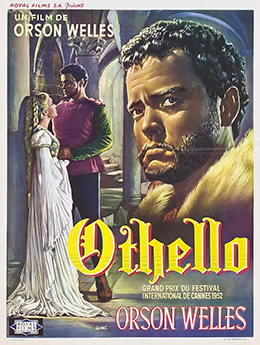 1. Othello (1951)
1. Othello (1951)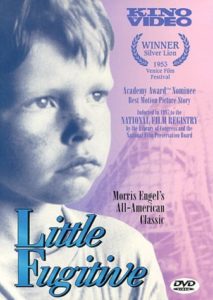 2. Little Fugitive (1953)
2. Little Fugitive (1953)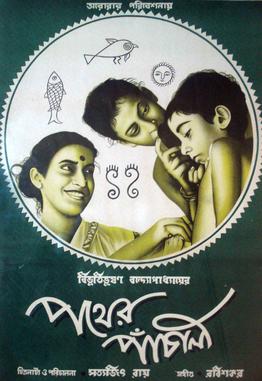 3. Pather Panchali (1955) – (English: Song of the Little Road)
3. Pather Panchali (1955) – (English: Song of the Little Road)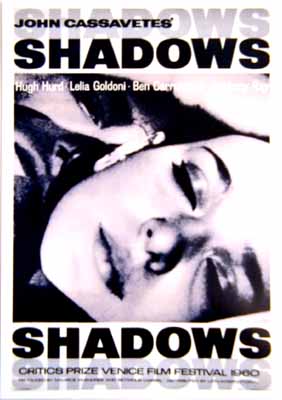 4. Shadows (1959)
4. Shadows (1959)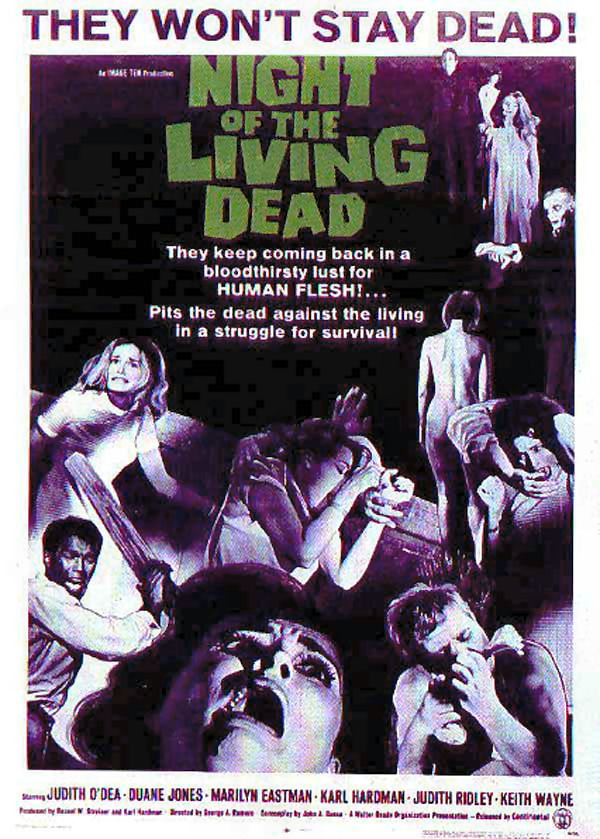 5. Night Of The Living Dead (1968)
5. Night Of The Living Dead (1968)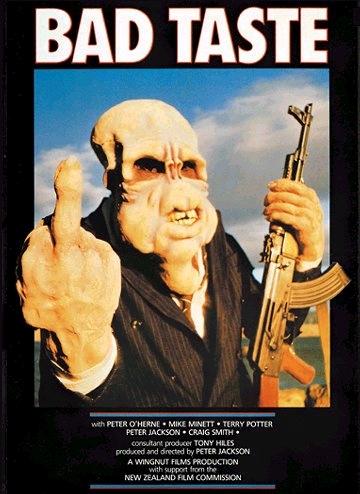 6. Bad Taste (1987)
6. Bad Taste (1987) 7. Slacker (1991)
7. Slacker (1991) 8. Primer (2004)
8. Primer (2004)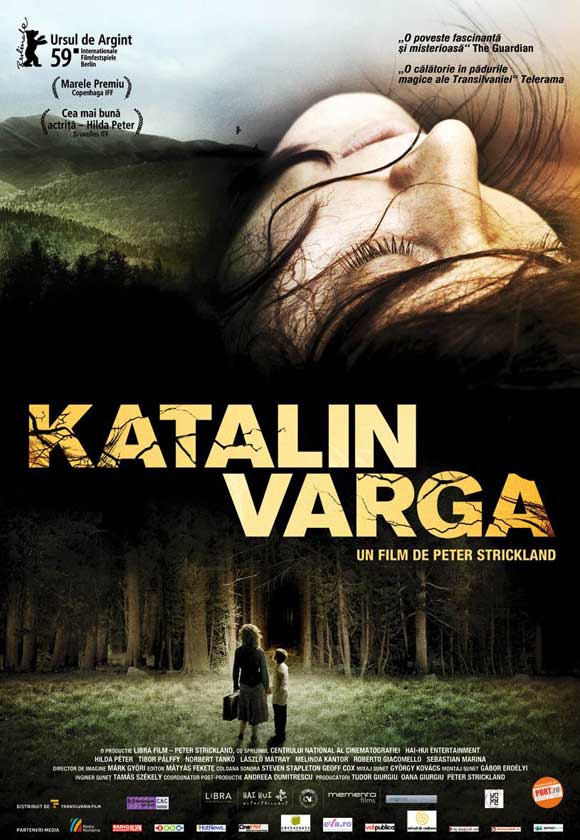 9. Katalin Varga (2009)
9. Katalin Varga (2009)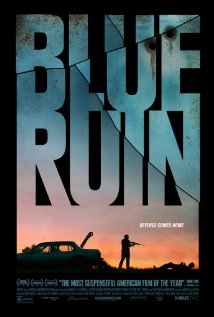 10. Blue Ruin (2013)
10. Blue Ruin (2013)
[…] 10 Best Films Funded by the Director August 25, 2017 […]
[…] Motion Film Festival released a fascinating list of “The 10 Best Self-Funded Films.” The list includes films by Orson Welles, Satyajit Ray, John Cassavetes, Richard Linklater and Peter […]
Apocalypse now!
Hollywood Shuffle